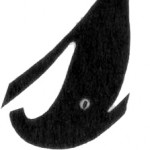Matching plaid
-
13 years ago LINK
Ana Sofia @Ana Sofia ASM_Blue
It won’t be my first try with this pattern, but this time I would love to use a wool plaid fabric (similar to the Burberry plaid, but in the blue color way) for the dress.
Any tips on matching the plaid on the yoke and the skirt? Or maybe should I just cut the fabric on the bias and forget about matching the plaid?
13 years ago LINK Sarvi
@Sarvi
Sarvi
@Sarvi
Johanna suggested a clever trick — using the notches to match the plaids — the notches are points where the pattern pieces connect, so if the plaid is lined up with those, it should line up on the seam (I think — I haven’t had a chance to try it out yet).
13 years ago LINK catherinel
@catherinel
catherinel
@catherinel
Which view are you using? I’m assuming that you’re doing view A with the pleats in the skirt.
I’m going to assume that your plaid is symmetrical, that is, the same on either side of a dominant line, both horizontally and vertically.
For the front yoke, I trace a pattern piece on a folded paper, cut it out so that I have the whole front pattern to put down on a single layer of fabric. For the back yoke I cut the two pieces individually, flipping the pattern over for one piece.
To match the back piece to the plaid, mark a line down the center back of your pattern piece and when cutting out your two backs, put that center back line over whatever dominant line you pick to be in the center. Line up the bottom seam line with another dominant horizontal line in the plaid. Be sure to line up both pieces that way. Do the same thing for your front yoke pattern piece, lining the bottom seam line with your chosen horizontal plaid line.
When cutting out the skirt backs, use the same technique for matching in the middle back, lining up the center back with that same dominant vertical line that you used for the yoke and line up the top seam line with the same horizontal line that you used for the bottom of the yoke pieces. The front skirt has that inverted box pleat in front, so you likely won’t be able to match the skirt front vertical line with the yoke front vertical line. (I would probably still match it, so that the edges of that inverted pleat were on the same place on the plaid.) At any rate, with the other pleats, it’s probably not going to all match vertically across where the yoke meets the skirt, but I don’t think that will matter so much. What you still need to do is match the top skirt seam line with that same horizontal line you used for the bottom of the yokes.
If you really wanted to exercise your brain, you could adjust the skirt patterns so that the pleats were some multiple of the design repeat in the plaid and match it all up vertically! If you’re not up to that (I never have been), keep in mind what Martha Pullen always said: “You won’t be able to see that on a galloping child.”
13 years ago LINKAna Sofia @Ana Sofia ASM_Blue
Thank you so much for your help, Sarvi and Catherinel!
The fabric was bought in mid-September and I intended to sew a 2+2 skirt, but to be honest, jumpers/dresses are more appropriate to her jumping/playing/dancing routine (they don’t fall, ehehe).
Almost every plaid jumper I found on the internet had some matching issues and I’ve even done a previous version with a smaller-scale plaid when this pattern was released last year (here’s the link: http://www.flickr.com/photos/35195588@N05/5199166702/ ) and, despite the mismatch plaid, I love it (she still wears it), but I would love to sew it right this time or at least make a better attempt at matching the plaid.
I’ll definitely try your suggestions to see how it goes. Hopefully, I’ll manage to get some sewing time this weekend and will post the outcome (!) in the Flickr group afterwards.
Thank you, thank you for your help!
btw Catherinel: Martha Pullen really said it all. That will be my new motto).
13 years ago LINK Nicole
@motherof5
Nicole
@motherof5
I really like the idea of the bodice on the bias….
13 years ago LINK Tamara
@justsewit
Tamara
@justsewit
When I cut things in plaid I generally try to lay the pieces side by side to match the side pattern. In most cases it works. I made a shirt for N in a plaid type print but of course it didn’t match up due to the tuck at the back of the shirt. It still looked good though so I don’t really think it matters considering you have big box pleats and to match them up would be potentially frustrating.
You could do the bodice on the bias to add a bit of interest. Either way I’m glad plaid is so timeless. I have a hankering to do a music class skirt for miss 9 in plaid – just got to find the right one.
Bottom line is though, I’d be more concerned about matching the side plaids than the skirt bodice especially with the box pleats – just my opinion.
13 years ago LINK Sarvi
@Sarvi
Sarvi
@Sarvi
“If you really wanted to exercise your brain, you could adjust the skirt patterns so that the pleats were some multiple of the design repeat in the plaid and match it all up vertically!”
I’m not sure how to visualize this — do you mean you’d pleat the fabric first, following the the design repeat, then cut the piece out after removing the pleats from the original pattern?
13 years ago LINK Nicole
@motherof5
Nicole
@motherof5
I wondered about pleating the fabric(following the plaid)to fit the bodice and the shaping the edges. Thats how I did the Twins school tunics when they started school.(Basic Burda pattern)
13 years ago LINK catherinel
@catherinel
catherinel
@catherinel
Sarvi,
I would put the pleats in so that the plaid matches up horizontally and then just cut it to match the bottom bodice width. Then on each side I would cut straight down the grain line. For view A I think the skirt is essentially a rectangle shape (I’m too lazy to pull out the pattern to check).
I made dozens of jumpers and dresses for my 3 older girls in the late 90’s–early 00’s, many of them plaid. I never worried too much about matching the skirt to the bodice so that the plaids matched vertically (that is so that you had a matched line going down the front); but I did spend a lot of time making sure the plaid matched along a horizontal line where the bodice met the skirt. This was so that it would look continuous going top to bottom. I also made sure the plaid matched in the center back (both horizontally and vertically) and that I had the plaid centered in the front. Of course this was the era of really full, often smocked, skirts, so the skirt was usually gathered. It’s hard to explain. I should pull out some of those old dresses and post them on flikr. It’s amazing how much the style changed in the 9 years between my older girls and my toddler.
13 years ago LINK Sarvi
@Sarvi
Sarvi
@Sarvi
Would love to see the photos!
13 years ago LINKAna Sofia @Ana Sofia ASM_Blue
Thank you again!
Nicole: Cutting the bodice on the bias was one of my first options (after surfing the net, I noticed that cutting the bodice on the bias is a popular option when working with “large-plaid/tartan” fabrics.
Catherinel: I agree with Sarvi. I would love to see the photos as well! Thank you for sharing!
(Luckily)I’ve been so busy (i.e. sewing time has been on-hold) that I’ve not yet cut the pieces and therefore, I’m still looking for the best option.
I’ll try to get a picture of the fabric to post it later today. It’s very similar to the Burberry blue plaid/tartan (i.e. a large print). I would love to use it for a jumper, but I’m not sure if I would like it if the plaid is not right (large scale mismatched plaid doesn’t sound good to me. But maybe I’m just being too perfectionist).
You’re all fantastic seamstresses so your valuable advise will surely be taken into consideration. Thank you so much!!!
13 years ago LINK catherinel
@catherinel
catherinel
@catherinel
Hello friends,
I pulled out some old plaid dresses and took some hasty photos and posted them on Flikr. They’re not in the Oliver+S group because they were all made a long time ago–the most recent is from 2003. In looking at them, I’m amazed at how much better I am at construction now than I was then. I’m also amazed at how good the smocking was. I always tell people that smocking is so much easier than construction and no one believes me, but it’s true!
The first picture is a recent one of my 2-year-old, who has really perked up my sewing motivation. I love making the little things.
I hope the link works: http://www.flickr.com/photos/cklassen1964/sets/72157628973249945/
Let me know if it doesn’t and I’ll figure something else out.
13 years ago LINKJennifer1568 @Jennifer1568
catherinel, those dresses are beautiful! Your workmanship is wonderful. The fabric choices are so formal. They seem like from another time. I have a daughter who was born in 92; I don’t think she ever wore dresses in that style. The smocking is remarkable, as well. I can’t imagine that you could have become a better seamstress, how could you get any better?
Do you try to match a plaid when sewing a sleeve? I didn’t try except to cut the two sleeves the same, having the lower seam at the bottom of the horizontal plaid pattern,
I really like your advice about centering the plaid and matching the center.
13 years ago LINKAna Sofia @Ana Sofia ASM_Blue
Thank you again, Catherine!
Just saw your gorgeous pictures! Your dresses are so amazing! Truly amazing garments and I’m sure they will be treasured for future generations.
I just added a photo of the plaid fabric to the flickr group: http://www.flickr.com/photos/35195588@N05/6745211837/ (not an easy decision)
13 years ago LINK catherinel
@catherinel
catherinel
@catherinel
Thanks for your kind comments! I had so much fun looking through everything, and I think that I’ll put the celery green/light blue dress on my toddler next fall. It’s held up the best style wise and is still in good shape.
Jennifer, I’ve never tried to match when setting in sleeves, mostly because I’ve always done puffy sleeves on plaids with a small repeat. If I were setting in a straight sleeve I would probably try to match horizontally.
Ana Sofia–I posted a comment directly to the flikr account.
You must be logged in to reply to this topic.
copyright
Unless otherwise credited, all work on this blog is © Liesl + Co., Inc, 2008-2026. You are welcome to link to this blog, but please ask permission before using any text or images.